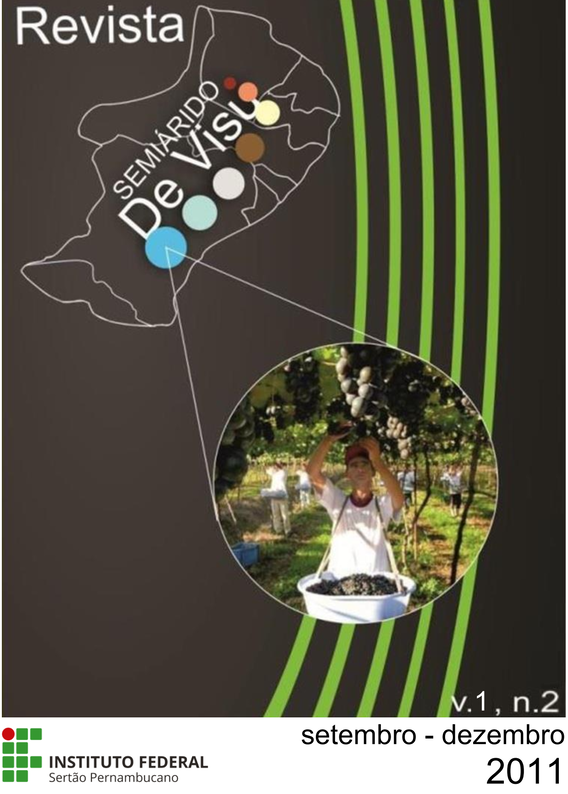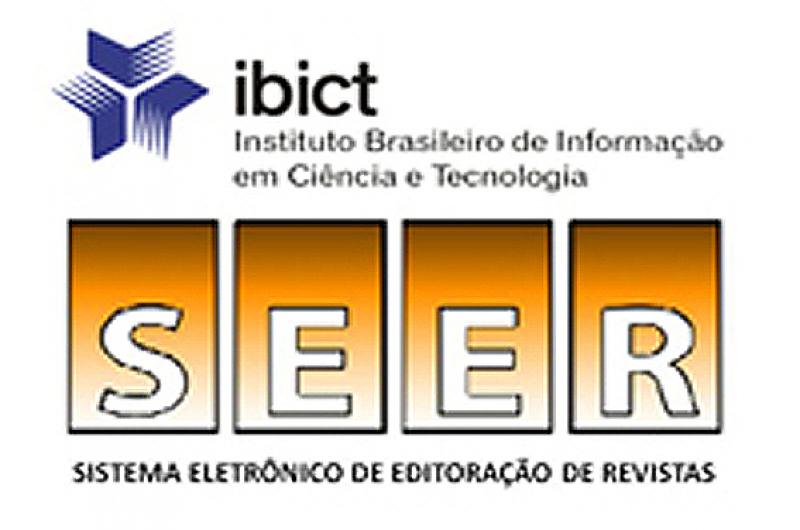Caracterização química e sensorial de uvas desidratadas, produzidas no Vale do São Francisco para infusão
DOI:
https://doi.org/10.31416/rsdv.v1i2.203Palavras-chave:
fermentado de fruta, chips de madeira, umburanaResumo
A uva é uma fruta típica de região de clima temperado, sendo cultivada para a elaboração de vinhos tradicionais nos países da União Europeia, Estados Unidos, Austrália, Nova Zelândia, África do Sul e América do Sul (Chile e Argentina). No Brasil, além do Rio Grande do Sul, onde as condições climáticas se aproximam dos países tradicionais, a videira foi adaptada para cultivo no Semiárido do Nordeste. A região semiárida brasileira possui um grande potencial para a produção de uvas de alta qualidade durante todo o ano por possuir elevados índices de insolação, favorecendo também a produção de uvas passas de excelentes características organolépticas. O presente trabalho foi desenvolvido com o objetivo de avaliar a probabilidade de serem produzidos materiais desidratados de uvas e seus descartes, a partir das variedades Shirah, Alicante Bouschet, Isabel, Mourvedre, Crimson, Petit Verdot e Red Globe, produzidas no Vale do São Francisco, com a finalidade de serem utilizadas em infusões, como fonte de antocianinas para os consumidores. Com base nos resultados obtidos, verifica-se que os chás foram bem aceitos, inclusive os de uvas das variedades Izabel e Mouvedre foram os chás que apresentaram predominância de aprovação em todos dos atributos sensoriais avaliados. A variedade mais importante como fonte de antocianinas é a Petit Verdot, uma vez que foi classificada neste estudo como uma das duas variedades que apresentou maior teor deste antioxidante, seguida pela Alicante.Referências
ADAMS, D. O. Phenolics and ripening in grape berries. American Journal of Enology and Viticulture, 57, 2006, 249-256.
AOAC. Official methods of analysis of the Association Analytical Chemists. 18.ed. Gaithersburg, Maryland, 2005.
ARAUJO, J. L. P.; CORREIA, R. C.; GUIMARÃES, J.; ARAUJO, E. P. Analise do custo de produção e Comercialização da manga produzida e exportada na região do Submédio São Francisco. In: CONGRESSO BRASILEIRO DE ECONOMIA E SOCIOLOGIA RURAL, 41., 2003, Juiz de Fora, Anais... Juiz de Fora; SOBER; Embrapa Gado de Leite; CES/JF; UFLA; UFSJ; UFV, 2003. 1 CD – ROM.
BARROS, J.C. da S.M. de; FERRI, C.P.; OKAWA, H. Qualidade da uva fina de mesa comercializada na Ceasa de Campinas, 1993 - 1994. Informações Econômicas, São Paulo, v.25, n.7, p. 53 - 61, 1995.
BRASIL, Leis, Decretos, etc. Instrução normativa No 1 de 7 de janeiro de 2000. Seção 1., p.54-58. Regulamento técnico geral para a fixação dos padrões de identidade e qualidade para polpa de fruta.
CABRITA, J. M.; SILVA, J. R.; LAUREANO, O. Os compostos polifenólicos das uvas e dos vinhos. In: I Seminário Internacional de Vitivinicultura. Local: Ensenada, México. 24 e 25 de Setembro de 2003.
CARVALHO, V. D.; CHITARRA, M. I. F. Aspectos quantitativos da uva. Informe Agropecuário, Belo Horizonte, v. 10, n. 117, p. 75-79, 1984.
CHIRIFE, J.; FAVETO, G.J. Some physico- chemical basis of food preservation by combined methods. Food Research
International, Kidlington, v.25, n.5, p.389- 396, 1992.
COOMBE, B. Influence of temperature on composition and quality of grapes. In: Proceedings of the International Symposium on Grapevine Canopy and Vigor Management, XXII IHC pp. 23-35. Davis, USA: ISHS Acta Horticulturae 206, 1987.
DANNE, M. A.; CITADIN, I.; SASSO, S. A. Z.; ZARTH, N. A.; MAZARO, S. M. Fontes de cálcio aplicadas no solo e sua relação com a qualidade da uva 'Vênus'. Revista Brasileira de Fruticultura, vol.31, n.3, Jaboticabal Sept. 2009.
EIDAM, T.; SANCHES, M. G. Estudo do perfil do consumidor de minimamente processado do municipio de ponta grossa. UTFPR, 2009.
EMBRAPA. Produção de passas através da desidratação artificial na região semi-árida brasileira. CT/38, CPATSA, julho 1989, p.2. Disponível em: <http://www.infoteca.cnptia.embrapa.br/bitstream/doc/133669/1/COT38.pdf>. Acesso em: 11 de julho de 2011.
EMBRAPA. Seminário Internacional debate efeitos das mudanças do clima sobre a vitivinicultura regional e mundial. Disponível em: <http://www.cpatsa.embrapa.br:8080/noticias/noticia151.php>. Acesso em: 25 dez. 2010.
GAVA, A. J. Princípios de tecnologia de alimentos. São Paulo: Nobel, 242p, 2002.
GOLLOP, R.; FARHI, S.; PERL, A. Regulation of leucoanthocyanidin dioxigenase gene expression in Vitis vinifera. Plant Science, 161, p. 579-588, 2001.
HERTOG, M.G.L.; HOLLMAN, P.C.H.; van de PUTTE, B. Content of potentially anticarcinogenic flavonoids of tea infusions, wines and fruit juices. Journal of Agricultural Food Chemistry, v. 41, n. 8, p. 1.242-1.246, 1993.
INSTITUTO BRASILEIRO DE GEOGRAFIA E ESTATÍSTICA – IBGE. Sistema IBGE de recuperação automática. Censo agropecuário- 2006. Disponível em:<http://www.sidra.ibge.gov.br/bda/tabela/protabl.asp?z=p&o=20&i=P>. Acesso em: 01 de julho de 2011.
IAL. Normas Analíticas do Instituto Adolfo Lutz. Métodos químicos e físicos para análise de alimentos. 3a ed. São Paulo, Instituto Adolfo Lutz, v.1, 2005.
KHAN, N.; MUKHTAR, H. Tea polyphenols for health promotion. Life Sciences, Oxford, v.81, n.7, p.519-533, 2007.
LEÃO, P. C. S.; SOARES, J. M. A Viticultura no Semi-Árido Brasileiro. EMBRAPA Semi- Árido, Petrolina, 2000.
MARTENS S., KNOTT J., SEITZ C: A., JANVARI L., YU S., FORKMANN G. Impact of biochemical pre-studies on specific metabolic engineering strategies of flavonoid biosynthesis in plant tissues. Bio. Eng. Journal, 14, 227-235, 2003.
MATOS, E. H. S. F. Processamento de Frutas Desidratadas. Dossiê Técnico. Centro de Apoio ao Desenvolvimento Tecnológico da Universidade de Brasília – CDT/UnB, 22 p., 2007.
MELLO, L.M.R.de. Atuação do Brasil no mercado vitivinícola mundial: Panorama 2007. Embrapa Uva e Vinho, 2007. Disponível em: <http://cnpuv.embrapa.br/>acesso em: 16 de fev. 2011.
MONTEIRO, S. Frutas e derivados: da uva ao vinho. Ano 2. Edição 08. Dezembro de 2007. Disponivel em <http://www.ibraf.org.br/x_files/revista08.pdf> . Acesso em: 26 de fev. 2011.
MUÑOZ, A.M., CIVILLE,G.V., CARR,B.T. Sensory evaluation in quality control. New York: Van Nostrand Reinhold, 1992. 240 p.
NORTHOLD, M.D. et al. Patulin production by some fungal species in relation to water activity and temperature. Journal of Food Protection, Des Moines, v.41, n.11, p.885-890, 1978.
OLLAT, N., DIAKOU-VERDIN, P., CARDE, J. P., BARRIEU, F., GAUDILLERE, J. P. & MOING, A. Grape berry development: A review. Journal International des Sciences de la Vigne et du Vin, 36, 109-131, 2002.
OLIVEIRA, M. E. C.; FERREIRA, A. F.; PODEROSO, J. C. M.; LESSA, A. C. V.; ARAÚJO, E. D.; CARNELOSSI, M. A. G.; RIBEIRO, G. T. Atividade de Água (Aw) em amostras de Pólen Apícola Desidratado e Mel do Estado de Sergipe. Revista da Fapese, v.4, n. 2, p. 27-36, jul./dez. 2008.
PUUPPONEN-PIMIÄ, R.; NOHYNEK, L.; MEIER, C.; KÄHKÖNEN, M.; HEINONEN, M.; HOPIA, A.; OKSMAN CALDENTEY, K.-M. Antimicrobial properties of phenolic compounds from berries. Journal of Applied Microbiology, v. 90, p. 494-507, 2001.
RANKINE, Bryce. Manual Prático de Enologia. Zaragoza – Espanha: Editorial Acribia, 1989.
RETO, M.; FIGUEIRA, M. E.; FILIPE, H. M.; ALMEIDA, C. M. M. Teor de fluoretos em infusões de chá verde (camellia sinensis). Unidade Farmacologia e Farmacotoxicologia, Faculdade de Farmácia, Universidade de Lisboa. Quim. Nova, Vol. 31, No. 2, 317-320, 2008.
RIBÉREAU-GAYON, P. Interpretation chimique de la couleur des vins rouges. Vitis, 12:119-142, 1973.
ROGGERO, J. P.; COEN, S.; RAGONNET, B. Hight performance liquid chromatography survey on changes in pigment content in ripening grapes of Syrah. An Approch to anthocyanin metabolism. American Journal of Enology and Viticulture, 37 (1), 77-83, 1986.
SANTOS, E. H.B.S.; AZEVEDO, L. C.; BATISTA, P.R.B.; LIMA, M.S.; AZOUBEL, P.M. Secagem e caracterização fisico-quimica da uva isabel (vitis labrusca). CONNEPI, 2010.
SERVIÇO BRASILEIRO DE RESPOSTAS TÉCNICAS. 2005. Disponivel em: <http://sbrt.ibict. upload/sbrt900-3.html>. Acesso em: 10 de julho de 2011.
SEYMOUR, G. B.; TAYLOR, J. E.; TUCKEY, G. A. Biochemistry of fruit ripening. London: Chapman &Hall, 1993. 454p.
SHAHIDI, F. Natural Antioxidants: An Overview “in” Natural Antioxidants Chemistry, Health Effects, and Applications. AOCS Press: Champaign, Illinois, p. 1-11. 1996.
SILVA, P. C. G.; CORREIA, R. C. Caracterização social e econômica da videira. In: SOUZA LEÃO, P. C.; SOARES, J. M.(Eds.). A viticultura no semi-árido brasileiro. Petrolina: Embrapa Semi-Árido, p. 19-32, 2000.
SOARES, M.; WELTER, L.; KUSKOSKI, E. M.; GONZAGA, L.; FETT, R. Compostos fenólicos e atividade antioxidante da casca de uvas Niágara e Isabel. Rev. Bras. Frutic. vol.30 no.1 Jaboticabal Mar.2008.
SOUSA, J.S.I. Viticultura brasileira: principais variedades e suas características. Piracicaba: Fealq, 368p, 2002.
SOUZA-LEÃO, P. C.; PEREIRA, F. M. Avaliação de seis variedades de uvas sem sementes no submédio São Francisco. Pesquisa Agropecuária Brasileira, Brasília, v. 36, n. 4, p. 607-613, 2001.
SOUZA, A. M. de; MOURA, A. F. C. de.; BRITTO, W. S. F. a carga tributária sobre os insumos agrícolas utilizados na cultura da uva no Vale do São Francisco. – Petrolina, PE, 2008.















